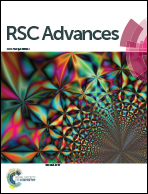Tested functionalization of alginate-immobilized ureolytic bacteria for improvement of soil biocementation and maximizing water retention
Abstract
The future expected water scarcity in the world invites the scientists to figure out sustainable solutions for agriculture needs. One of suggested solutions could be the improvement of soil stability and increasing its water retention ability. The current proposal is concerning by the improvement of soil stability through biocementation process. While, water retention ability was enhanced through the amendment of tested soils with alginate hydrogel. An ureolytic bacterial isolate showed a detectable ability to dissociate urea and act as a nucleation site for calcium carbonate precipitation. The bacterium was identified as Bacillus sp. after comparing with other strains in GenBank. The mechanical properties of three tested soil types (sand, calcareous, and clay) were improved after the biocementation by calcium carbonate from 119.8, 45.9, and 5 (N) to 187.5, 423.9, and 337.2, respectively. The Energy-dispersive X-ray spectroscopy (EDX) analysis confirmed the appearance of carbon element in samples containing bacterial-immobilized beads and free bacterial cells indicating calcium carbonate formation. The water uptake measurements investigated the ability of alginate beads to retain water with a percentage of 55%. The overall results prove the capability of Bacillus sp. strain combined with alginate hydrogel to improve the soil stability and water retention ability.



 Please wait while we load your content...
Please wait while we load your content...